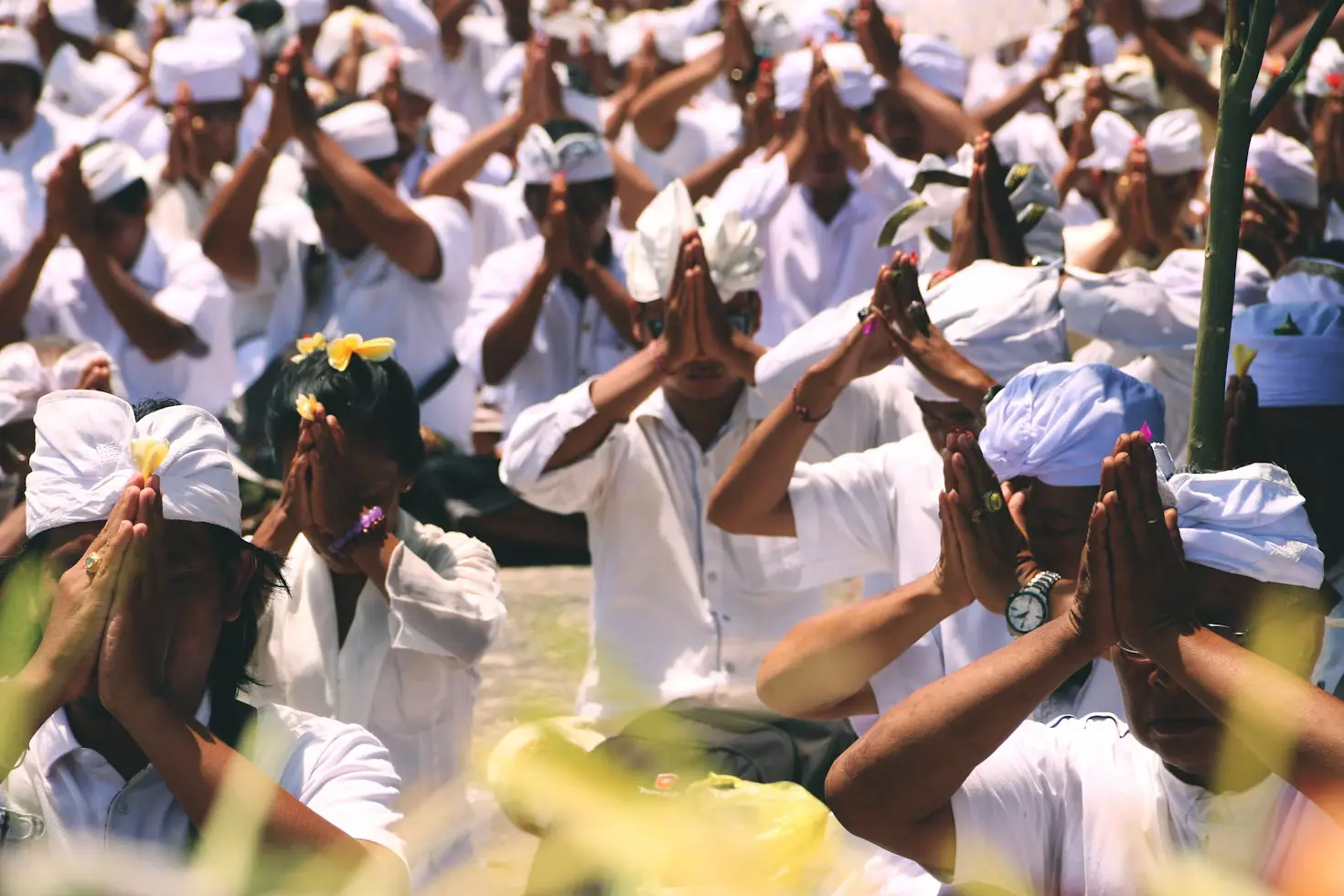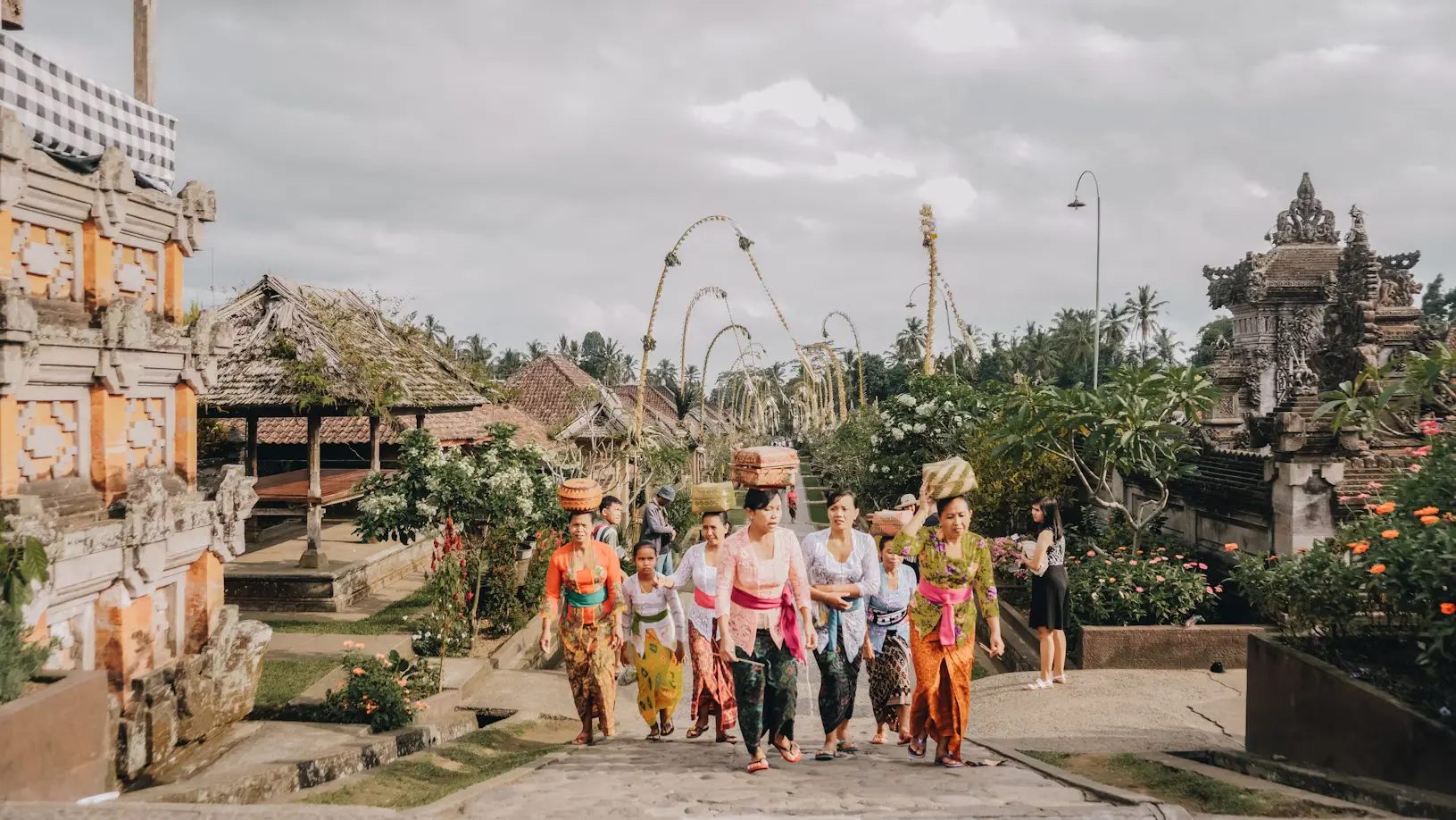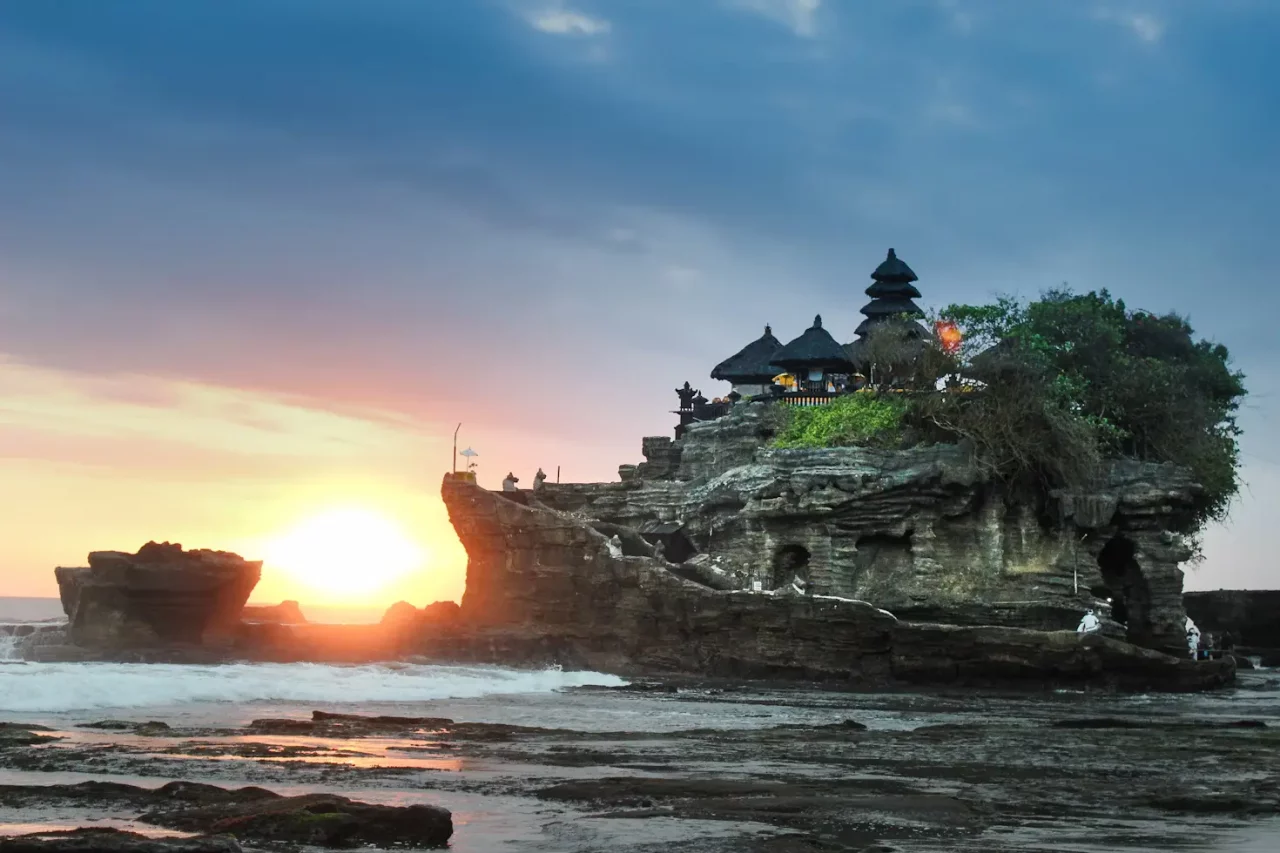Imagine a whole island falling silent. No traffic, no music, not even lights. This isn’t a power cut, but rather the culmination of Bali’s most significant and unique ceremony known as Nyepi, the Day of Silence. On this special day, which marks the start of the Balinese New Year, the island transforms into a place of deep contemplation.
During this period, Balinese Hindus seek a stronger connection with Sang Hyang Widhi Wasa, their supreme God, through prayer, meditation, and fasting. To guide their spiritual journey throughout this sacred time, a series of fascinating rituals takes place. In this article, we will delve into six rituals observed on Bali’s Day of Silence.
1. Melasti Ceremony
In the lead up to Nyepi, around three or four days beforehand, the spiritual journey begins with the Melasti ceremony. It’s an important cleansing ritual held at coastal Pura temples. Here, thousands of Balinese Hindus dress in white and join a grand procession that heads towards the ocean. They carry sacred objects from the temples, which they dip into the sea to purify them. This act symbolises washing away any impurities they may have.
However, the Melasti ceremony holds a deeper meaning than just cleaning objects. It represents cleansing negativity as well as purifying the minds and souls of the participants since they prepare for the reflective days ahead.
2. Bhuta Yajna Ceremony
Just as the sun sets on the day before Nyepi, Bali comes alive with a colourful celebration to ward off negativity. This is the Bhuta Yajna ceremony, also known as Pengerupukan. Villagers take to the streets in a lively procession, banging on kulkul (Balinese traditional bamboo bells) that make a strong rhythm. They also carry flaming torches that light up the night in an eerie glow, symbolising the banishment of evil spirits.
The highlight of the night is the amazing Ogoh-Ogoh parade. Giant, scary figures made from paper that represent bad forces are carried through the streets with everyone celebrating and having fun. Loud gamelan music and traditional dances fill the air, creating a fun and exciting show. Finally, all the Ogoh-Ogoh figures are burned, symbolising getting rid of any negativity and evil from the community before the quiet and holy day of Nyepi begins.
3. Nyepi Day


After the lively Ogoh-Ogoh parade, Bali falls silent for a whole day. This is Nyepi, a sacred time for deep reflection and spiritual cleansing. During Nyepi, Balinese Hindus follow four important rules called Catur Brata Penyepian:
-
Amati Geni (No Fire)
This doesn’t just mean no lights or cooking. It also signifies avoiding things that bring anger, hatred, or negativity.
-
Amati Karya (No Work)
On Nyepi, people take a break from their daily tasks. Instead, they focus on prayer and meditation, seeking a deeper connection with Sang Hyang Widhi Wasa.
-
Amati Lelungan (No Travel)
This is a day to stay put. Cars are off the road, and people remain within their homes for a whole 24 hours, allowing for complete peace and quiet.
-
Amati Lelanguan (No Entertainment)
Since Nyepi is a time for silence and reflection, loud music, parties, and even watching TV are on hold for the day.
4. Yoga Brata Ritual
Nyepi isn’t just a day of silence; it’s also a dedicated time for inner reflection and spiritual connection. Yoga Brata Ritual begins at 6:00 AM in Nyepi and lasts for a full 24 hours until the next morning. During this period, Balinese Hindus focus entirely on prayer and meditation to seek a deeper connection with Sang Hyang Widhi Wasa.
To create a peaceful environment for everyone’s meditation, the entire island observes strict silence. This means staying indoors and avoiding any noise or activity that could disrupt the tranquillity. Those found outside during the Day of Silence might get caught and penalised by local guards, called Pecalang, who uphold traditional Balinese law.
5. Ngembak Agni or Labuh Brata Ceremony


The day after Nyepi’s silence, a lively celebration called Ngembak Agni, also known as Labuh Brata, marks the return to everyday life. This is a time for Balinese Hindus to reconnect with their loved ones. They visit family, neighbours, and relatives, asking for forgiveness for any past wrongdoings. This tradition strengthens community harmony and clears the air for a fresh start in the new year.
6. Dharma Shanti Ceremony
The Dharma Santi ceremony marks the grand finale of the Nyepi celebrations. It’s a joyous occasion dedicated to fostering friendship, compassion, and unity for the nation’s well-being. The ceremony typically features the recitation of Sloka, Kekidung, and Kakawi (ancient texts filled with poetry and prose), often accompanied by the presence of esteemed guests like President Joko Widodo or other government officials.
Conclusion
In conclusion, Bali’s Day of Silence offers a profound insight into the island’s rich cultural heritage and spiritual traditions. From the purification rituals of Melasti to the solemn contemplation of Nyepi Day itself and the joyful reunions of Dharma Santi, Bali’s Day of Silence is a deep journey of self-discovery, renewal, and community. This unique experience leaves a lasting impact on everyone involved, highlighting the significance of inner peace, forgiveness, and connection with something greater than ourselves.
If you’re ever considering experiencing the magic of Nyepi firsthand, Bali offers a truly unforgettable setting. To fully immerse yourself in the island’s culture and serenity, consider staying at Natadesa Resort Residence. This exclusive cluster of villas in Jimbaran provides a luxurious and peaceful retreat, perfectly situated to experience all that Nyepi has to offer.







